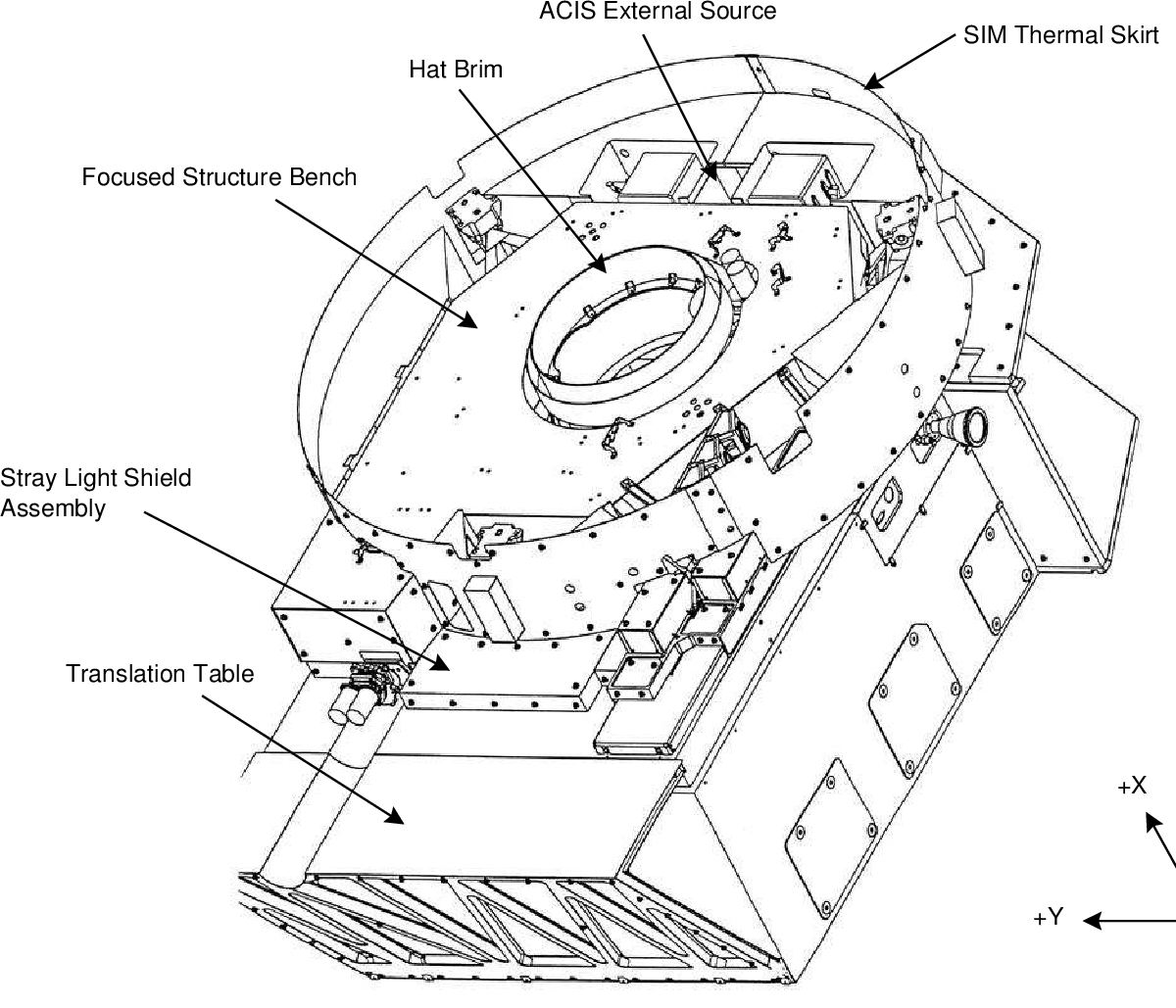| Chandra "dry" mass (incl. reserve) | 4790 kg |
| Loaded Propellant | 40 kg |
| Electrical Power | 3 NiH2 batteries |
| Two 3-panel solar arrays |
| Nominal Operating Power | 800−1100 W |
| Optical bench length | ∼ 10 meters |
| SIM focus adjustment range | ±0.4 inches |
| SIM focus adjustment accuracy | ±0.0005 inches |
| SIM Z-position adjustment repeatability | ±0.005 inches |
| Solid-state recorder capacity | 1.8 Gb × 2 |
| On-board command storage | 5400 command words |
| Nominal command storage period | 72 hours |
| Observatory telemetry data-rate | 32 kbps |
| Telemetry playback downlink rates | 1024, 512, and 256 kbps |
| Nominal ground contact periods | 45 to 75 minutes per 8 hours |
| SI telemetry rate | 24 kbps |
| Telemetry format 1 major frame | = 32.8 sec |
| = 128 minor frames |
| Clock error | < 100μs |
| Clock stability | 1:109 per day |
| Clock frequency | 1.024 MHz |

